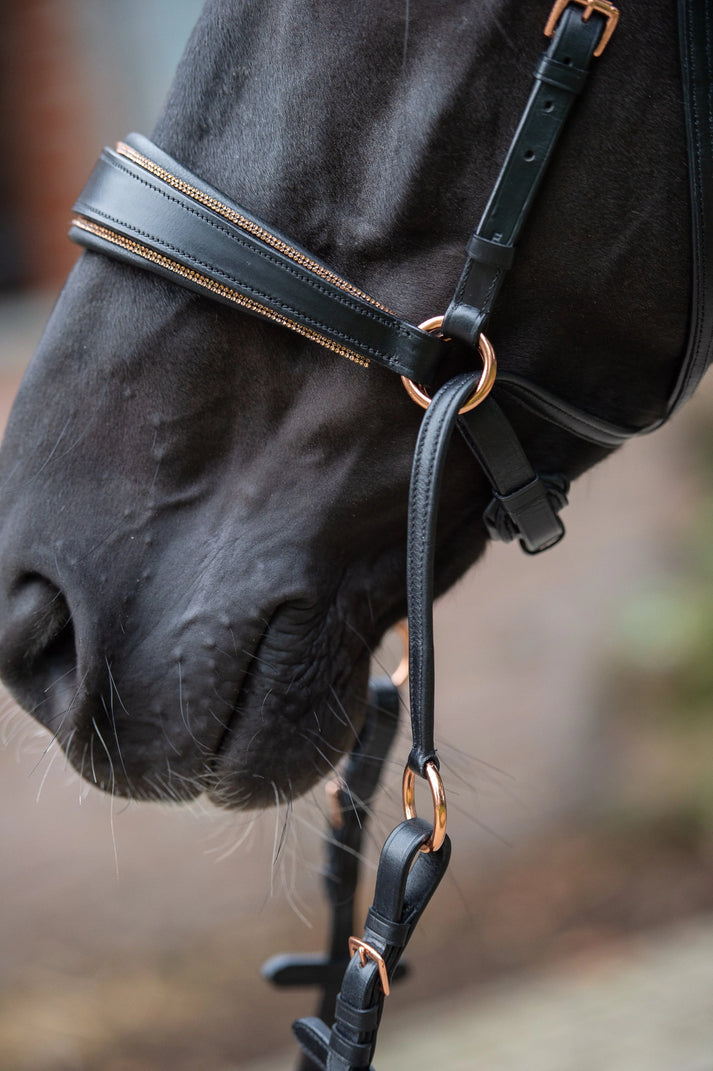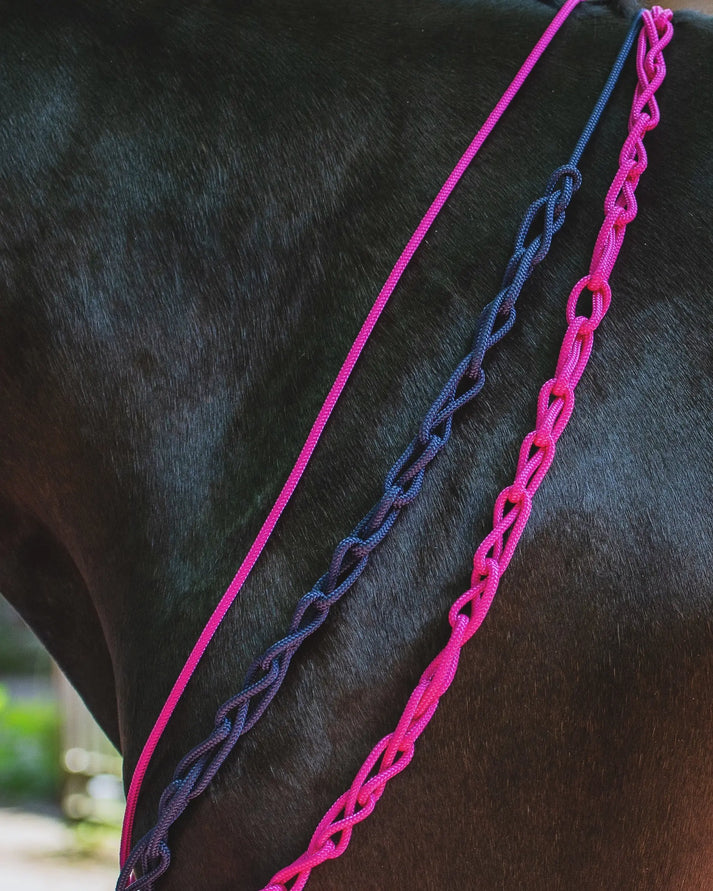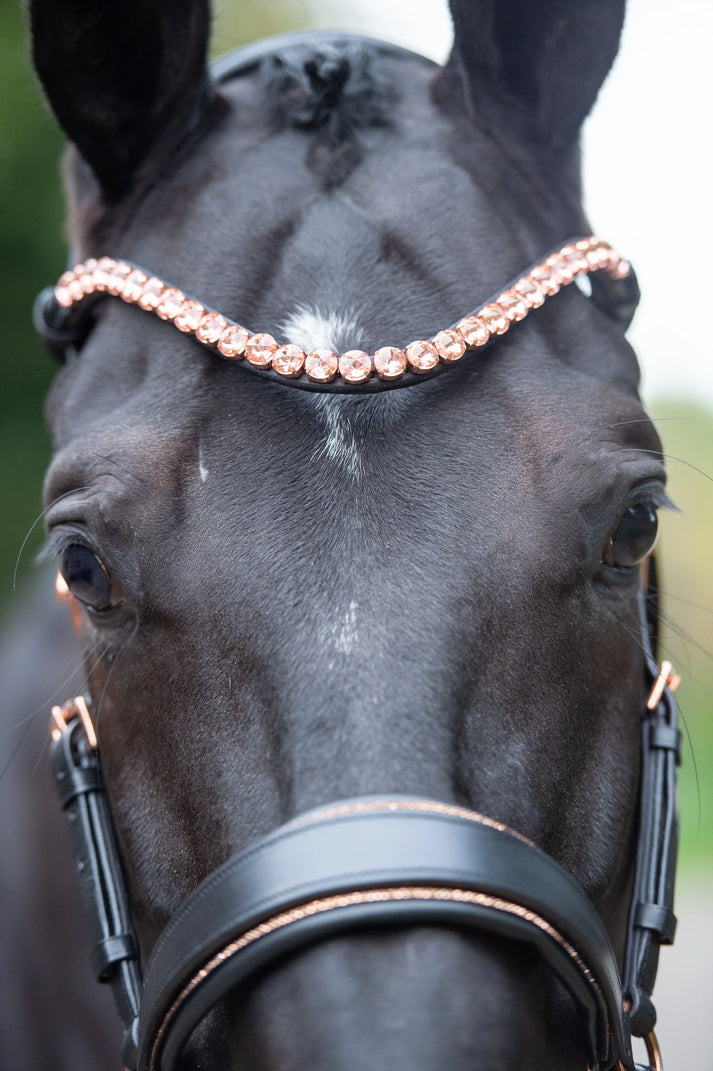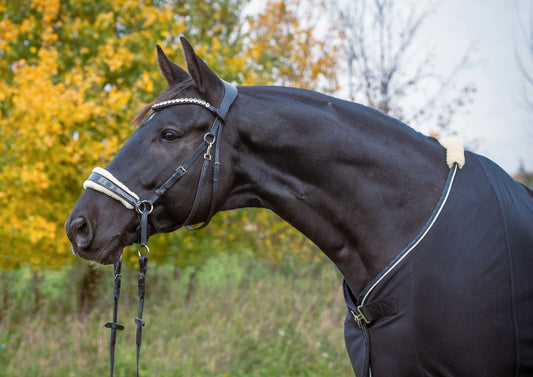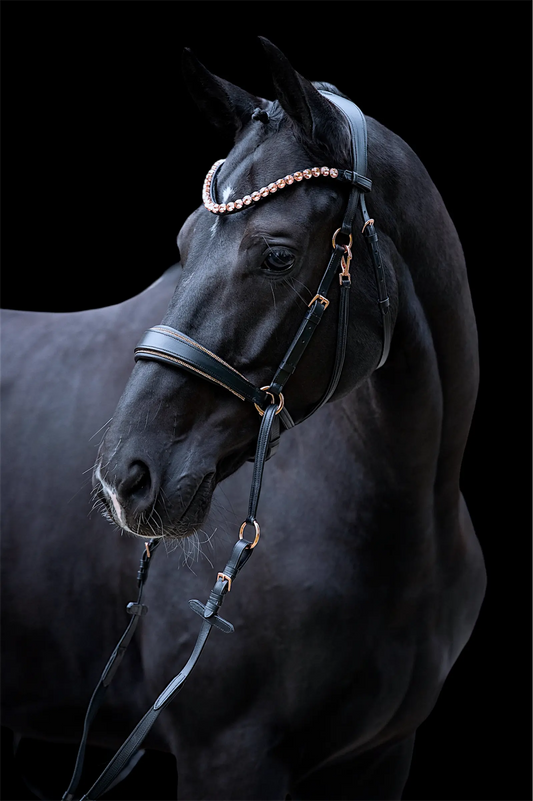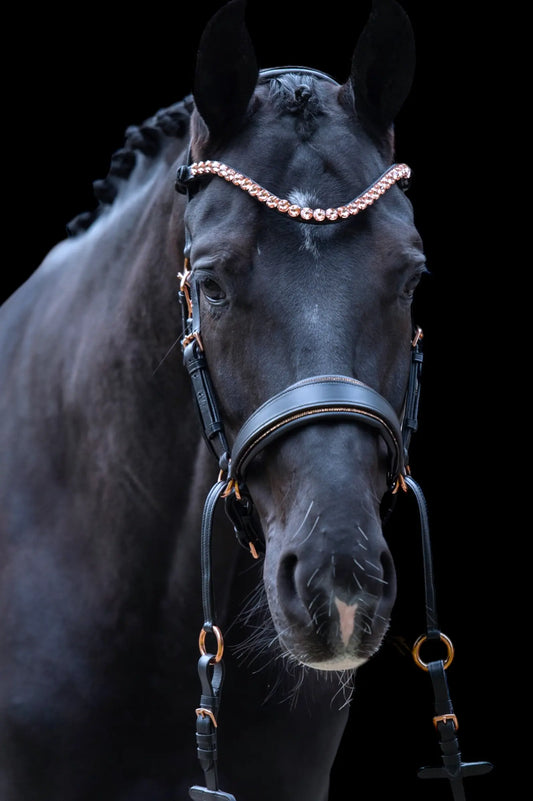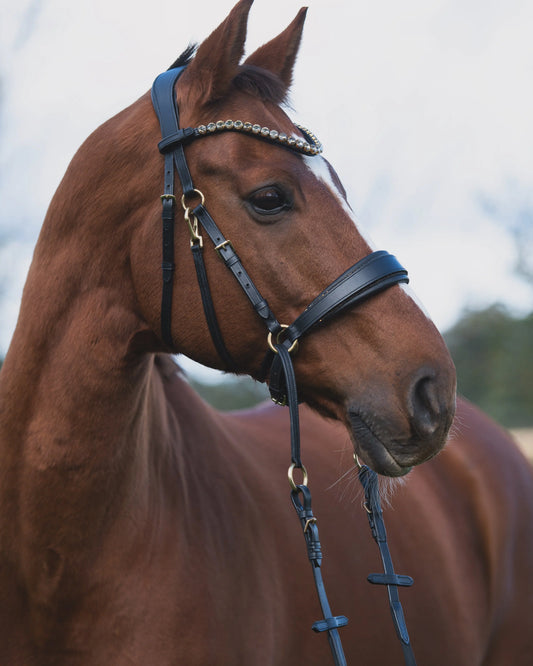Step-by-step instructions-bite without bite
Share
Step-by-step instructions - riding bitless
The path to a bitless bridle: step-by-step instructions for riders
The decision to ride bitless is often the beginning of a journey toward a more refined and harmonious communication with your horse. However, the transition to a bitless bridle should be carefully considered and cautious to provide both horse and rider with the necessary security and composure. In this guide, I'll show you how to gradually transition to a bitless bridle without overtaxing your horse.
1. The right preparation: building trust and foundations
The most important step is for your horse to have a fundamental trust in your aids. If you've already ridden with a bit, make sure your horse understands the rein aids well and that you increasingly use your weight and seat. A horse that's used to the aids of the bit will need some time to adjust to the new bridle. Therefore, take your time and approach the transition gradually.
2. Use balance reins as the first option
A balance rein is an effective tool for introducing your horse to the feeling of a bitless bridle. The balance rein applies light pressure and gently teaches your horse how to respond to the new way of handling. Start with short sessions to avoid overtaxing the horse. It's important to always give the horse the opportunity to keep its head clear and its mouth free to move.
3. The seat as the basis of communication
Without the bit, the importance of your seat becomes even more crucial. Work specifically on your balance and your feel for the horse to send subtle signals. The more precisely you use your weight and leg aids, the easier it will be for your horse to understand the bitless influence. Practice transitions and changes of direction using your seat to strengthen the connection between you and your horse.
4. Short, clear signals via the reins
When transitioning to a bitless bridle, it's important to give your horse clear, concise signals through the reins. Avoid applying constant pressure to the reins, as this can lead to confusion and discomfort. Instead, the reins should be seen as a gentle means of communication, used only when necessary. Praise your horse often and use positive reinforcement to encourage him.
5. Stay patient and calm
The transition to a bitless bridle requires patience. It's completely normal for your horse to need time to get used to the new bridle. It's important that you give him this time and pay attention to his reactions. If your horse seems unsure or stressed, take a break or step back. Your calm and positive attitude will rub off on your horse.
6. First steps and exercises
Start with simple exercises like large circles and transitions between walk, trot, and halt. Make sure your horse stays relaxed and performs the exercises calmly. Gradually, you can intensify the training and incorporate more lessons once your horse has gained confidence and security in the new bridle.
Conclusion: A smooth transition to the bitless bridle
Switching to a bitless bridle is an opportunity to deepen communication with your horse and give him more freedom.By proceeding gradually and carefully, you will help your horse get used to the new influence and gain confidence. Always be careful not to overwhelm your horse and listen to its reactions.
Bitless riding is more than a technique—it's a philosophy based on subtle communication, trust, and mutual respect. With patience and the right preparation, you can successfully navigate this path and help your horse achieve relaxed and unhurried movement.

